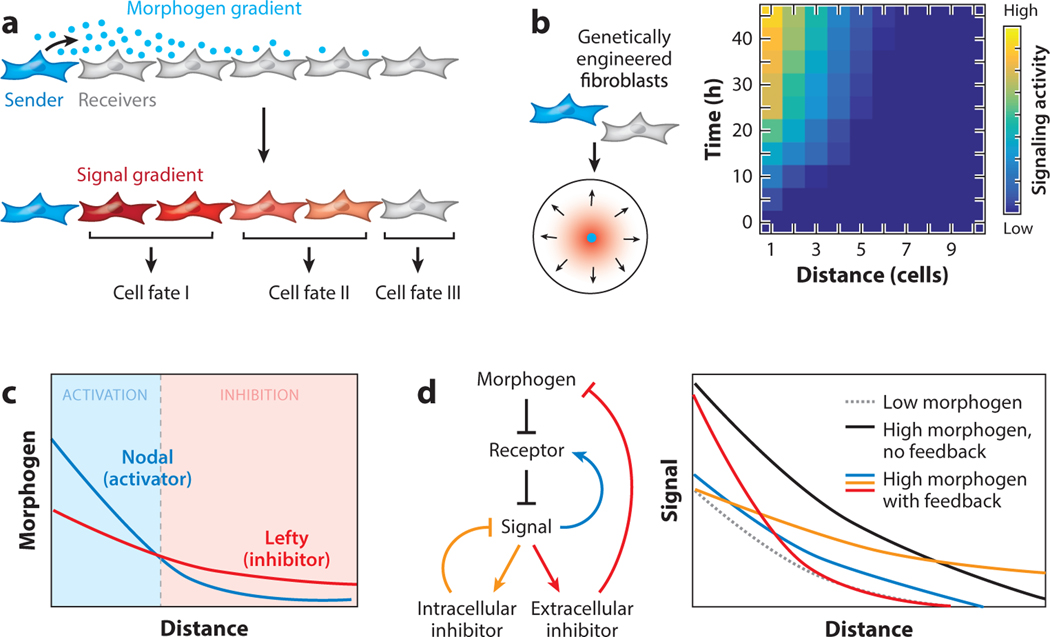Figure 3.
Morphogen pathway architectures regulate patterning behavior. (a) Morphogens secreted by sender cells form spatial gradients, which trigger graded signaling responses in receiver cells and determine cell fates. (b) Morphogen signaling gradients can be reconstituted using genetically engineered fibroblasts in cell culture, and the gradients are dynamic in both time and space. (c) Nodal and Lefty morphogens secreted from the same sender cells form short-range activation and long-range inhibition zones, due to the differential diffusion rates of the two ligands. Nodal is an activator and Lefty is an inhibitor of the pathway. (d) The robustness of Sonic Hedgehog (SHH) signaling gradients to fluctuations in the morphogen production rate depends on the feedback loops in the pathway. Receiver cells with different types of negative feedback loops, which can be genetically engineered, show different capabilities to buffer the changes in the morphogen production level. Feedback that induces only an intracellular inhibitor (orange) or an extracellular inhibitor (red) buffer the gradient’s amplitude or length scale, respectively, against an increase in the morphogen production level. The evolutionarily conserved feedback loop (blue), in which receptor expression is upregulated upon signal activation, can provide both capabilities in the SHH pathway. Abbreviations: FB, feedback.

